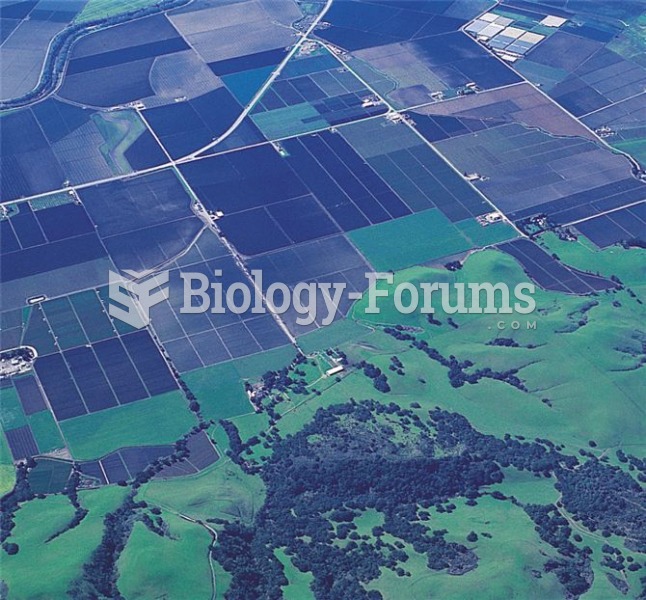Answer to Question 1
Answer: A glacier is a large mass of flowing, perennial ice. It is like a conveyor belt; it picks up and carries eroded material where ice accumulates and begins to flow, and where the glacier begins to melt it deposits material. The accumulation area is the erosion site, because ice is eroding the land by moving material, and the ablation area is the deposition site. Glacial deposits play an especially important role in shaping landforms in places with rapid melting because large quantities of material are dropped in these places, forming moraines.
Till: Much of the north-central United States is actually overlain by ice-deposited material called till.
Terminal Moraines: Terminal moraines tend to be found at the place of maximum ice extent , where we find accumulations of ice-borne material. Some of these are quite large; in fact, Long Island and Cape Cod are the tops of terminal moraines from past glaciations.
Outwash plain: An accumulation of sand and gravel carried by meltwater streams from a glacier, usually deposited immediately beyond the terminal moraine from the glacier. The outwash plain contains a thick layer of rocks deposited close to the glacier in a layer of sand and gravel that can exceed a thickness of 330 feet. The finer silt and clay materials are usually carried much farther and may be deposited in lakes, seas, or distant valleys.
Areas where glaciers form typically leave behind deep bowl shaped depressions and U-shaped valleys. Heavily eroded areas often have very thin soils or bare rock.
Where deposition takes place, we tend to find materials that have been shaped by flowing ice, materials that were carried in meltwater streams and so bear the marks of flowing water, and sediments left behind.
Answer to Question 2
Answer: A coast is an especially active area of erosion because an enormous amount of energy is concentrated on the shorelines from pounding waves. Coastal land may be lost to erosion, or gained through deposition, at rates up to several meters per year. Rising sea level accelerates many coastal processes and increases vulnerability of coastal communities
Because of the high rates of change that can occur in coastal environments, and because many commercial and recreational activities are focused there, humans actively manage coastal processes by building breakwaters that parallel the shoreline, jetties and groins that are perpendicular to it, and similar structures. A jetty constructed in one location along the shore to interrupt the movement of sand will cause less sand to be deposited on a beach farther along the shore, worsening the erosion problem there. People also build sea walls parallel to the shore, but the constant pounding of waves removes sand from around the sea walls and ultimately undermines them.
Answer to Question 3
Answer: Mass movement is the downslope movement of rock and soil at Earth's surface, driven mainly by the force of gravity acting on those materials. Some mass movements are very common and gradual, while others are rare and sudden.
Soil creep is the most common form of mass movement. It is a very slow, gradual movement of material down the slope of a hill. A tiny movement, such as an insect pushing soil aside, can cause creep. Creep occurs near the surface, in the top 3 to 10 feet of soil. Even though creep is very slow and usually unnoticed, it is relatively steady and can move a substantial amount of material downslope over time.
Some mass movements can also be rare and sudden. These tends to be a more dangerous and dramatic form of mass movements. Landslides and mudflows, examples of this type of mass movement, can occur on steep slopes, especially during wet conditions. In landslides, a relatively intact mass of rock or soil slides over the surface below. Landslides follow intense rains, because material with a high water content is weaker and less able to resist the force of gravity. On the other hand, if the slide occurs in weathered rock and soil, it tends to break down into a thick fluid as it moves downhill, becoming a mudflow.







